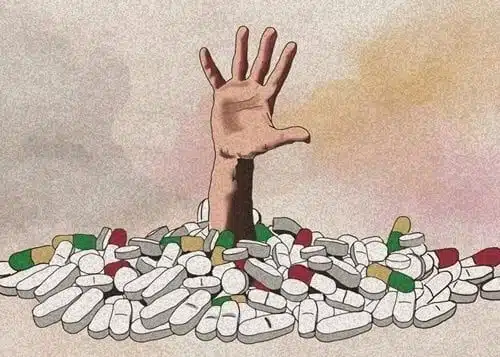According to the latest numbers from the U.S. Centers for Disease Control and Prevention, 5,500 people died of synthetic opioid overdoses in 2014, most of them related to fentanyl. That’s an 80% increase over the numbers reported in 2013.
The United States is in the midst of a drug crisis, with a 200% increase in the rate of opioid overdose deaths since 2000. Opioids are a class of drugs derived from the opium poppy, like morphine, codeine or heroin, but they also include the latest concern: synthetics like oxycodone, hydrocodone and the extremely potent fentanyl.
Last year, the Drug Enforcement Administration issued a national alert stating that “drug incidents and overdoses related to fentanyl are occurring at an alarming rate.” In 2013, the DEA made 942 fentanyl seizures; in 2014, it made 3,344.
Street version vs. hospital version
Used by doctors, fentanyl is the most powerful opioid in medicine. However, according to the DEA, much of what is being found on the streets is not diverted from hospitals but rather sourced from China and Mexico. Frequently, people buy it on the street with no idea that it is fentanyl.
Illicit fentanyl is a bestseller on the streets and a prolific killer. It is so potent that when law enforcement goes in to seize it, officers have to wear level A hazmat suits, the highest protection level made, the same kind of suits health care workers use to avoid contamination by the deadly Ebola virus.
“Just micrograms can make a difference between life and death. It’s that serious,” said DEA Special Agent John Martin, who is based in San Francisco. An amount the size of a few grains of sand of fentanyl can kill you. “All you have to do is touch it. It can be absorbed through the skin and the eyes.”
One of the top priorities for Martin and his agency is to stop the flow of fentanyl and other opioids from flooding American communities.
It first showed up in deadly doses on the streets in 2007. The DEA traced the illicit fentanyl to a single lab in Mexico and shut it down. Fentanyl drug seizures subsided for a while, but in 2014, they spiked in 10 states.
It’s been an uphill battle. Americans are buying it in record numbers, and highly organized drug cartels are spreading it far and wide.
What is curious is where the drug or elements to make it originate. Its street nickname is “China White” or “China girl,” offering a hint at where most of it is coming from.
“DEA investigations reveal that Mexico-based drug cartels are buying fentanyl directly from China,” Martin said.
And as far as profits go, the other opioids commonly sold on the streets — heroin, hydrocodone, OxyContin and Norco — can’t even touch fentanyl.
Hydrocodone sells for about $30 a pill on the street. A fentanyl pill may look and cost the same but requires only a fraction of the narcotic to give users an even stronger reaction.
The DEA estimates that drug traffickers can buy a kilogram of fentanyl powder for $3,300 and sell it on the streets for more than 300 times that, generating nearly a million dollars.
Fentanyl is often trafficked through the cartels’ standard maze of routes through Mexico and into the U.S. But sometimes it’s simply ordered on the notorious dark web and shows up straight from China in the buyer’s mailbox.
“We’re using countless resources to deal with the threat,” Martin said.
Seizures of the drug have jumped dramatically, which would seem to be good news for the DEA. But what it indicates is that there is more of it to seize than ever before.
“Everywhere from the Northeast corridor, down to New York, the Midwest and now we’re seeing it here out on the West Coast. Fentanyl is everywhere right now,” Martin said.
On the East Coast and in the Midwest, it’s often sold as powder and mixed with heroin. On the West Coast, it is showing up mostly in pill form.
“It’s feeding America’s addiction to opioids,” Martin said, adding that the cartels have figured out a way to make it more cheaply and easily than heroin.
What does it look like?
Fentnayl can come in several forms. Used in the hospital, it can be injected, put in a patch for absorption into the body or given as a lozenge or a lollipop. Illegal forms include a powder, a pill or a piece of blotter paper placed under the tongue.
Who is using and where?
More than 80% of all fentanyl seizures in 2014 were concentrated in just 10 states: Ohio, Massachusetts, Pennsylvania, Maryland, New Jersey, Kentucky, Virginia, Florida, New Hampshire and Indiana.
In 2013, Ohio reported 92 fentanyl-related overdose deaths. The next year, there was a five-fold increase, with 514 deaths. In Maryland, the number of overdose deaths jumped from 58 in 2013 to 185 the next year.
Though heroin used to be concentrated in low-income urban areas, opioid drug users now are predominantly white, suburban and in their late 20s.


